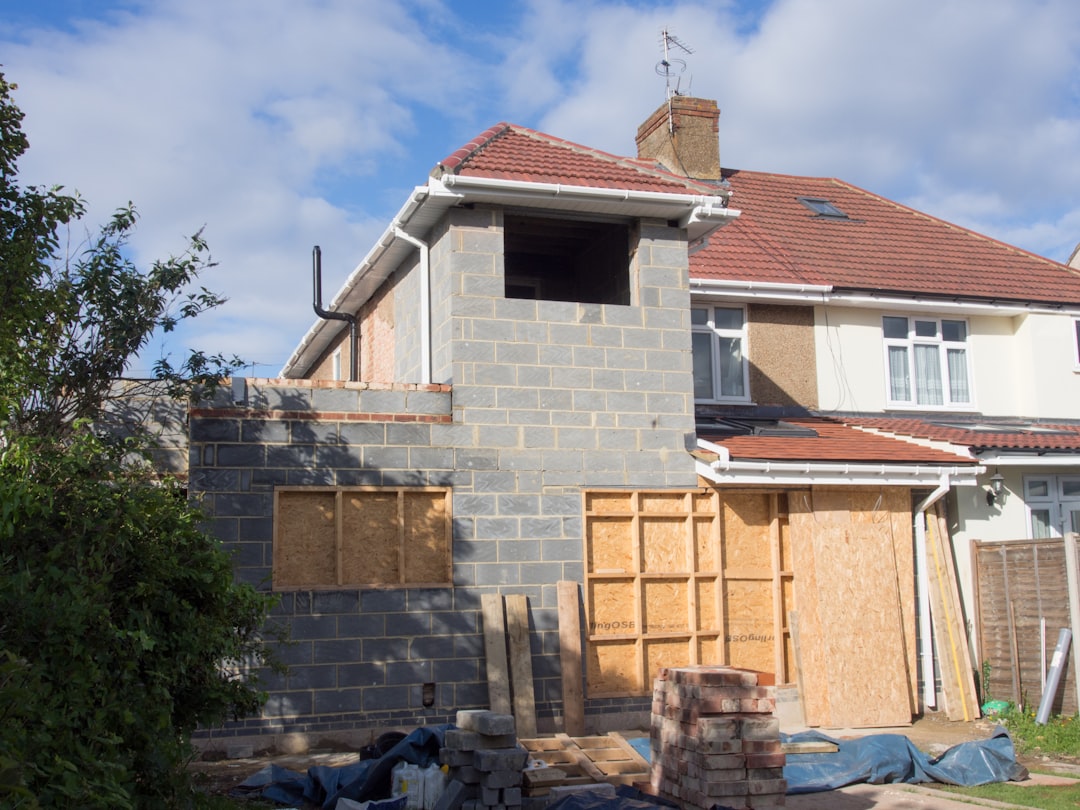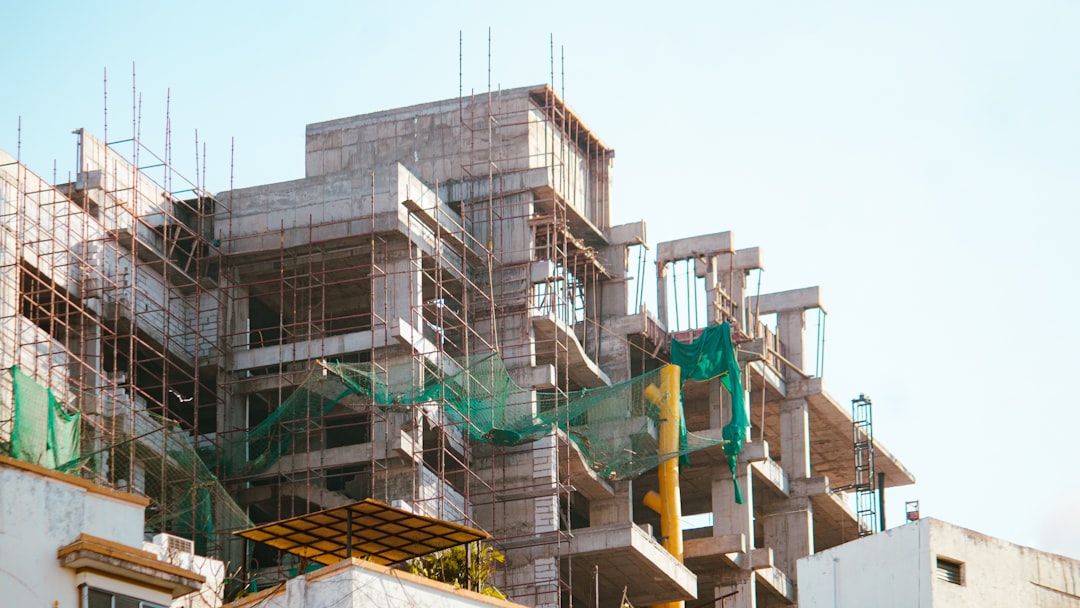

Engage prospects with a scan and streamline customer engagement with FREE QR code marketing tools by Sona – no strings attached!
Create a Free QR CodeFree consultation

No commitment

Engage prospects with a scan and streamline customer engagement with FREE QR code marketing tools by Sona – no strings attached!
Create a Free QR CodeFree consultation

No commitment
Home performance contractors are navigating a rapidly changing landscape where consumers expect seamless, digitally enabled experiences. In today’s market, a significant challenge persists: valuable customer interactions frequently go untracked because traditional, offline service moments are disconnected from digital systems. When home visits, assessment packets, or mailers fail to capture customer intent in real time, high-potential leads can slip through the cracks, resulting in lost revenue and inefficient marketing spend.
QR codes have emerged as a practical, transformative tool for home performance contractors, addressing these shortcomings by instantly linking offline touchpoints with actionable digital flows. For a broader view of tactics, explore Sona QR’s QR marketing. Whether it is a QR code on a service van, an estimate packet, or a door hanger, homeowners can access booking forms, educational content, financing options, or review portals with a single scan, removing friction and making engagement effortless. Contractors can also replace outdated manual checklists and brochures with digital forms that feed directly into their CRM, improving visibility and ensuring no prospect or customer is lost as an anonymous missed opportunity.
By strategically deploying QR codes across every step of the customer journey, contractors gain more than just leads. They unlock nuanced analytics that reveal who is interested, which services attract attention, and how to tailor follow-ups for each client segment. This guide explores how QR code integration enables contractors to identify warm prospects, surface vital engagement signals, and optimize their marketing while future proofing their business for sustainable technology-driven growth.

Fragmented paper processes and static handouts often leave contractors blind to who is engaging and when. It becomes harder to follow up with prospects who display real interest, like a homeowner who reads an energy audit brochure at a community fair but never fills out a form. The result is a pipeline full of invisible intent signals and missed conversations that could have converted into audits, replacements, or insulation jobs. For related guidance, see contractor-focused best practices.
QR codes bridge this gap by tightly linking physical presence with instant, measurable digital actions. For example, a homeowner scanning a QR code on a yard sign can be taken directly to a booking form with preselected appointment types. Their scan is logged, the lead is created in the CRM, and an automated SMS confirms the appointment or invites them to finish scheduling. Similarly, dynamic QR codes placed on printed assessment packets can route technicians and customers to the latest compliance documents, rebate forms, or safety standards, eliminating outdated content and reducing risk.
Step by step, contractors should:
Modern platforms make this straightforward. With Sona QR, teams can centrally manage codes, refresh content in real time, and access analytics that turn each scan into a usable lead or engagement signal. Start creating QR codes for free at Sona QR registration.

A central frustration in home performance is the lack of visibility into who is interacting in physical settings. Appointment cards, truck wraps, and static signage often generate attention but produce little data about who engaged or took action. Without a mechanism to capture that interest, promising leads remain unknown and unpursued, undermining marketing ROI and field productivity. For additional industry perspective, review these homebuilder tips.
QR codes directly address these gaps by turning offline-to-online moments into traceable, actionable insights. Scans route homeowners to app-free experiences like booking an audit, exploring heat pump options, or watching a 60-second video on attic insulation benefits. Each scan carries context about where it happened and when, giving contractors the ability to identify high-intent neighborhoods, prioritize follow-ups, and time reminders to when homeowners are most likely to act.
In practice, this means appointment cards that finally convert, brochures that double as interactive education platforms, and truck wraps that act like vehicle QR codes with analytics. Contractors gain control over a customer journey that used to be fragmented and partially invisible.

Not all QR codes are created equal. Using generic links limits segmentation and personalization. Home performance teams benefit from QR formats tied to specific intents, each designed to streamline the most common tasks homeowners perform before and after a visit.
The most effective formats in this vertical include:
Static codes have a role, such as linking to a fixed brochure PDF. For most campaigns, dynamic codes are superior because they allow ongoing updates, granular analytics, and audience retargeting. With Sona QR, teams can generate and manage every format from one dashboard, rotate destinations as offers change, and keep analytics intact.

Home performance contractors already invest in a wide mix of physical assets. By turning each into a digital onramp, you convert attention into leads and insights. Start with the placements that intersect high visibility, high intent, and clear next steps.
Do not overlook less obvious surfaces. Equipment stickers in mechanical rooms, magnets on thermostats, attic hatch labels, and leave-behind fridge cards can all host service QR codes for scheduling maintenance and submitting referrals. Consider stickers and labels to capture post-visit engagement.

Home performance workflows are packed with moments where interest is high but conversion is fragile. QR codes reduce friction at those moments and make response data visible. The result is faster follow-up, higher conversion rates, and richer insights about what homeowners actually want.
Each use case captures engagement signals that would otherwise be lost. Time on page for an IAQ video, a scan from an attic hatch sticker, or a late-night financing precheck can all trigger personalized follow-ups. When integrated with your CRM and marketing tools, these signals prioritize outreach and turn curiosity into booked work.
Every scan contains intent, context, and timing. By deploying multiple QR codes across the journey, you can segment automatically and retarget based on real behavior. This makes your nurturing smarter than generic email blasts and more cost effective than broad advertising. For execution, see Sona’s retargeting playbook.
Start by assigning unique QR codes to journey stages. For example, awareness codes on community flyers might promote an audit quiz, consideration codes on assessment packets might explain heat pump benefits, and conversion codes on estimates might offer limited-time financing. Each scan builds a list aligned to buyer stage, making follow-up messaging more relevant.
Next, tag your codes by use case, location, and time. Scans from a neighborhood yard sign suggest local trust effects and proximity readiness. Scans from utility bill inserts signal incentive-driven interest. Evening scans on repair literature may indicate emergency needs or overloaded schedules.
With Sona QR, each code becomes a smart entry point that automatically enriches contacts. You can build segments from scan metadata, trigger alerts to sales, and launch retargeting without manual exports. This makes personalization scalable for busy operations teams.
QR codes are the connective tissue between your offline footprint and your digital engine. They capture engagement where it happens and route it to the right next step. The objective is to make every brochure, door hanger, and truck wrap measurable, then use that data to invest in what works.
QR codes turn your offline placements into trackable, optimizable channels. With Sona QR, scan data from each touchpoint can sync into your CRM, assign ownership to the right rep, and trigger automated messages that carry momentum forward.
Decide what business outcome your QR campaign must drive. Focus each code on a single, clear objective to avoid confusion and maximize conversion. In home performance, high-yield goals include energy audit bookings, heat pump replacement quotes, insulation upgrades, maintenance plan enrollments, and review or referral collection.
Select a format that supports your goal and your need for flexibility and attribution. In most cases, dynamic codes are best for campaigns that require continuous optimization, accurate tracking, and destination updates without reprinting.
Design influences scannability and action. Treat the QR as a primary CTA, not a decorative afterthought. Pair it with a benefit-driven message and proof elements that lower friction.
Roll out unique codes across prioritized assets so you can measure performance by placement and creative. Begin with two to three channels where you can execute well and learn quickly, then scale. For more ideas, see these contractor marketing tips.
Measure what matters so you can shift budget and improve creative. QR campaigns shine when scan data ties cleanly to lead quality, bookings, and revenue.
Engagement is useful, but attribution drives investment decisions. To scale QR successfully, you need a clear line from scan to booked work and revenue. This level of visibility helps you choose which placements to expand, which messages to retire, and how to equip your field team with the right materials.
Traditional analytics often stop at page views or form fills. Siloed systems make it hard to see which truck wrap generated the scan that became the audit that led to the heat pump install. A connected QR stack solves this by tying scan events to CRM contacts, opportunities, and closed jobs. With the right dataset, you can attribute revenue to specific QR placements and optimize for profit, not just clicks. Learn more about offline attribution.
Sona QR captures real-world engagement with detailed scan analytics. Sona.com layers on journey mapping and identity resolution to connect anonymous scans to known contacts, unify touchpoints across stages, and attribute pipeline and revenue accurately. Together they turn QR from a tactical experiment into a performance channel you can forecast.
Expanding QR impact is about consistency, clarity, and operational follow-through. The most common pitfall is using the same code everywhere, which blocks attribution. The second is weak calls to action that fail to tell homeowners what they will get when they scan.
Strong QR operations turn every service call, estimate, and neighborhood drive into measurable exposure. Over time, this discipline compounds into a durable advantage in your local market.
The home performance sector blends hands-on service with complex decisions around comfort, efficiency, incentives, and financing. That complexity can stall momentum if homeowners are left to connect the dots alone. QR codes, used with intent and integrated into your CRM, connect offline curiosity to online clarity. They help you recognize high-potential accounts as soon as they engage, deliver timely and personalized nurturing, and surface upsell signals at exactly the right moment.
As you deploy these tools, start focused. Pick one or two placements, define success metrics in advance, and use dynamic codes so you can update quickly as you learn. Then expand to trucks, yard signs, utility inserts, and event kits. With Sona QR, you can generate and manage your codes, monitor performance, and sync scan data with your CRM and ad platforms. With Sona.com, you can attribute scans to pipeline and revenue, building the case to scale what works.
The path forward is clear. Turn every physical touchpoint into a digital entry point, capture intent at the source, and convert it into booked work with automation and great follow-up. When your offline presence and online systems work in lockstep, you will stop losing opportunities to silence and start compounding results across every neighborhood you serve.
QR codes have revolutionized the home performance contractors industry by transforming how professionals connect with customers and streamline access to vital information. Whether it’s simplifying service documentation, enabling instant access to energy reports, or enhancing client communication, QR codes replace cumbersome processes with seamless, mobile-friendly interactions that elevate the customer experience and boost operational efficiency. Imagine your clients effortlessly scanning a code to schedule follow-ups or access personalized home performance data instantly—turning every interaction into a meaningful engagement.
With Sona QR, you gain the power to create dynamic, trackable QR codes in seconds, update your campaigns on the fly without costly reprints, and link every scan to actionable insights that drive growth. No more missed opportunities or guesswork—just smarter, more effective ways to acquire customers and deliver exceptional service. Start for free with Sona QR today and unlock the full potential of QR codes to elevate your home performance contracting business.
QR codes link offline touchpoints like trucks, mailers, and door hangers to digital flows such as booking forms, educational content, and financing options, enabling contractors to capture customer intent in real time and convert leads more effectively.
QR codes provide offline to online continuity, real-time tracking and attribution, dynamic content flexibility, cost efficiency, and improved lead capture by turning physical assets into measurable, actionable digital engagements.
Contractors use QR codes integrated with CRMs to offer seamless booking, access to up-to-date compliance documents, rebate forms, educational videos, and automated follow-ups, reducing friction and personalizing customer interactions.
Best practices include identifying key physical touchpoints, deploying outcome-focused QR campaigns with clear calls to action, integrating scan data into CRMs, using dynamic codes for ongoing updates, and testing and optimizing messaging based on analytics.
By replacing manual paperwork with QR codes that link to digital forms and resources, contractors ensure technicians and customers access current compliance and safety documents, streamline data capture, and enable automated follow-ups to enhance operational efficiency.
Use Sona QR's trackable codes to improve customer acquisition and engagement today.
Create Your FREE Trackable QR Code in SecondsJoin results-focused teams combining Sona Platform automation with advanced Google Ads strategies to scale lead generation

Connect your existing CRM

Free Account Enrichment

No setup fees
No commitment required

Free consultation

Get a custom Google Ads roadmap for your business






Launch campaigns that generate qualified leads in 30 days or less.
